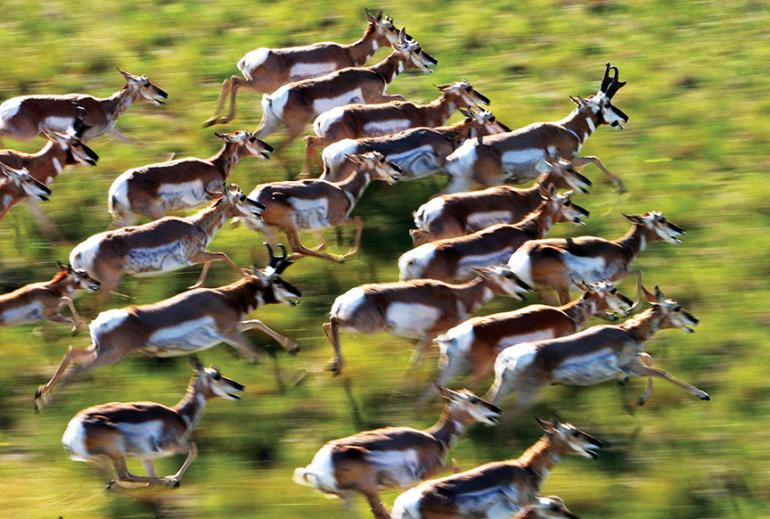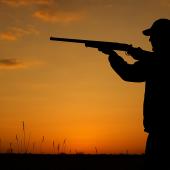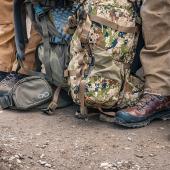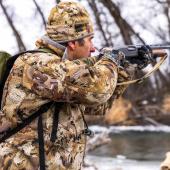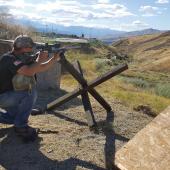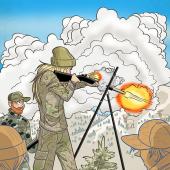Fast Food
Finding a Montana pronghorn.
A thin film of dust coats your lips as you worm your way through the sagebrush. One elbow, then another, head lowered over a cradled rifle. The sun’s high and hot and you’re sweating. But there’s a herd of antelope just over the next rise—you think—and this is the final approach. A concealed perch atop the knoll, behind some sage, and you should be within striking distance. All you have to do is stay low and avoid those eyes, those keen, watchful antelope eyes.
Antelope are like fish swimming the prairie: the way they move, weaving all together; how they can disappear in an instant, even in wide-open terrain. They can spot you from over a mile away—and then bolt, if they’ve been hunted enough. And they’re fast. Odds are, you won’t get a second chance at the same herd. And that, of course, is what makes them so fun to hunt. It helps that they taste great, too—many local chefs refer to antelope as “the king’s meat.”
Habitat
On any open plain or sagebrush flat in Montana east of the Continental Divide, and even in a few places west of it, you’re apt to find pronghorn antelope. These native species are called antelope, but in reality, their closest genetic relative is the giraffe. Go figure. Pronghorns are the speediest land animals in Montana, and can exceed 50 miles per hour. They can see better than other ungulates and can spot careless hunters at great distances. These are natural prairie animals that prefer wide-open grasslands. However, they are often found in agricultural lands, such as wheat and alfalfa fields, where grazing is good. Find locations where these two landscapes intersect—both natural and cultivated prairie—and it’s likely that some antelope are nearby.
Behavior
Antelope typically feed and travel in small herds that can grow fairly large during winter months, as they congregate on good winter feeding grounds. Feeding antelope can move around a lot. Across the rolling prairie, it’s not uncommon to find it empty one minute and full of antelope the next, as the herd grazes its way out of a depression or coulee. When spooked, a herd of antelope will move quickly to put distance between themselves and whatever they perceive as a threat.
Male antelope older than yearlings have horns, and about a third of females do, too. Antelope horns are unique in that they are the only true horn that is shed every year, and the only true horn that bifurcates, or has a prong. Mature males can have horns more than 12 inches long, while horns on females seldom exceed six to eight inches and usually do not have a prong. Males also have dark cheek patches on their faces and a larger, darker nose-mask than females.
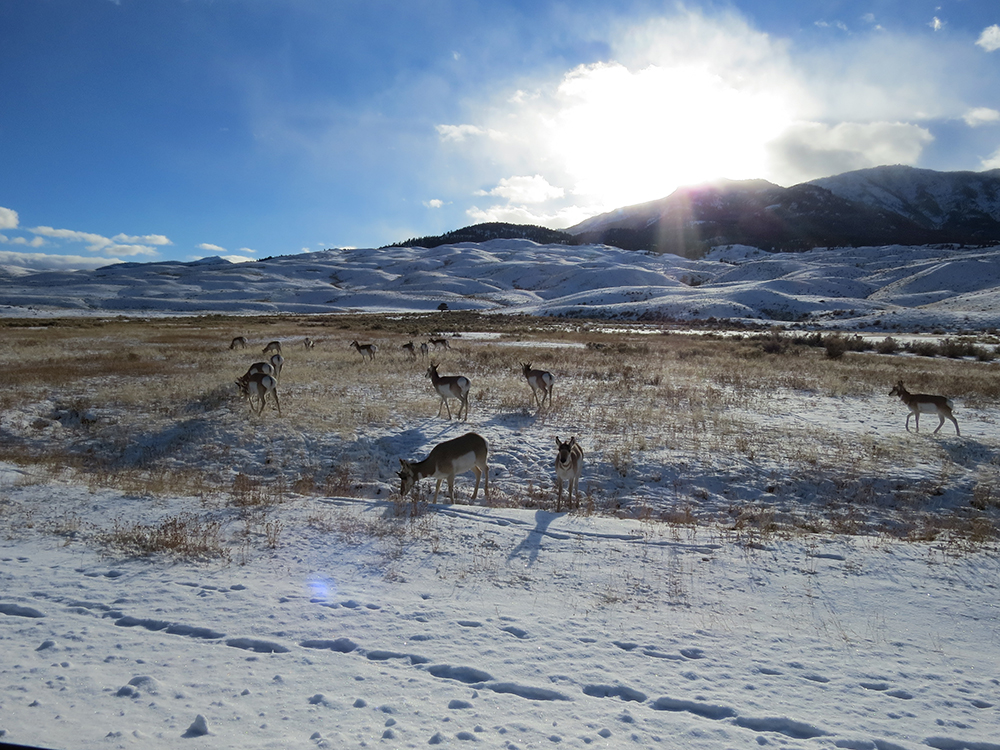
Gear
Hunters pursue antelope with a variety of firearms, along with archeryequipment. Antelope are smaller than deer and elk and as such, smaller rifle calibers are effective. However, skilled shooters might take longer shots at antelope, so some hunters prefer fast, flat-shooting calibers. Other helpful gear for antelope hunters are good binoculars and layered, highly camouflaged clothing. Antelope season starts earlier than both regular bow and rifle seasons and can be warm. One small piece of advice is to watch for prickly pear cactus. Antelope hunters will often find themselves belly-crawling across long expanses of prairie to get into range. When your attention is focused on your quarry, it’s easy to forget where you put your elbow or knee.
Bow vs. Rifle
Bow hunters pursue antelope in the late summer during their rut and often employ the use of decoys to attract rutting bucks to within shooting range. Water holes can also be key this time of year, particularly during dry summers. Antelope will come to water at predictable times of the day—morning and evening—and during the rut, active bucks will stay with does when they come to water.
For rifle hunters, the general antelope season starts two weeks before the general big game season and is a great opportunity to get out early. And even though rifles provide hunters with the ability to kill animals from a longer distance than does archery equipment, antelope can foil even the most skilled riflemen. With the rut over, wary bucks seem to be even more vigilant during rifle season, especially after the season has been underway for a few weeks.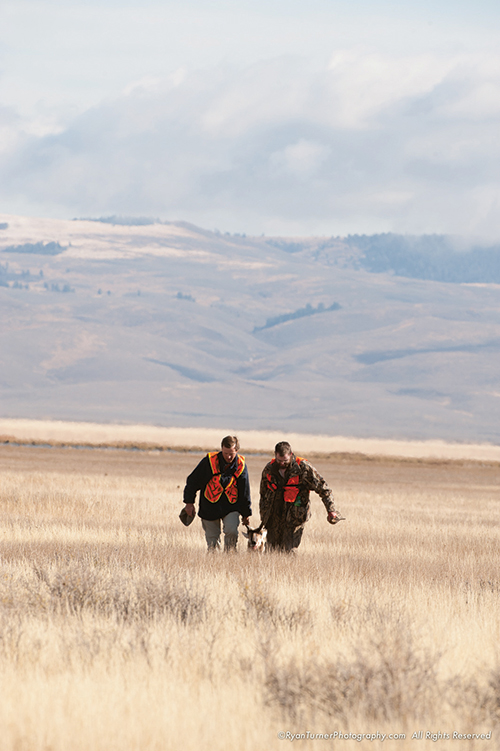
Like most animals, antelope are most active in the early mornings and evenings. Unlike deer and elk, they tend to bed down out in the open, so they can be spotted and hunted even in mid-day. Glassing herds from a long distance and then planning a stalk are the most effective tactics. The successful hunters find ways to use the terrain to their benefit. Look for subtle contours in the flatlands, including small draws or hills and even ditches and dry creekbeds.
Pack-Out
Being rather small, antelope can be field dressed quickly, quartered, and loaded into a good-sized pack more readily than other ungulates. Temperature is often a consideration during antelope season. When the weather is hot, hunters must take precautions to cool their meat down quickly. This is done best by removing the hide immediately and getting the animal out of the field and into a cooler. My personal opinion is that this strategy makes for the best-tasting meat, no matter what the temperature is outside. The key point here is that before they pull the trigger, hunters should be ready to act quickly to take care of the animal.
Rut
Antelope bucks are very active during the rut, which typically begins in late August. Bucks collect does and protect their herds from other competing bucks. Like other ungulates, rutting antelope bucks become less cautious. In Montana, this all happens during bow season and so hunters often use decoys to lure aggressive bucks close.
Regs
Montana’s archery season for antelope can start as early as mid-August for those with special tags. The general antelope archery season starts in early September and lasts about a month. General antelope rifle season starts in early October and also runs about a month. The deadline to apply for antelope licenses is June 1. In many hunting districts, successful applicants can also purchase a second doe/fawn permit.

